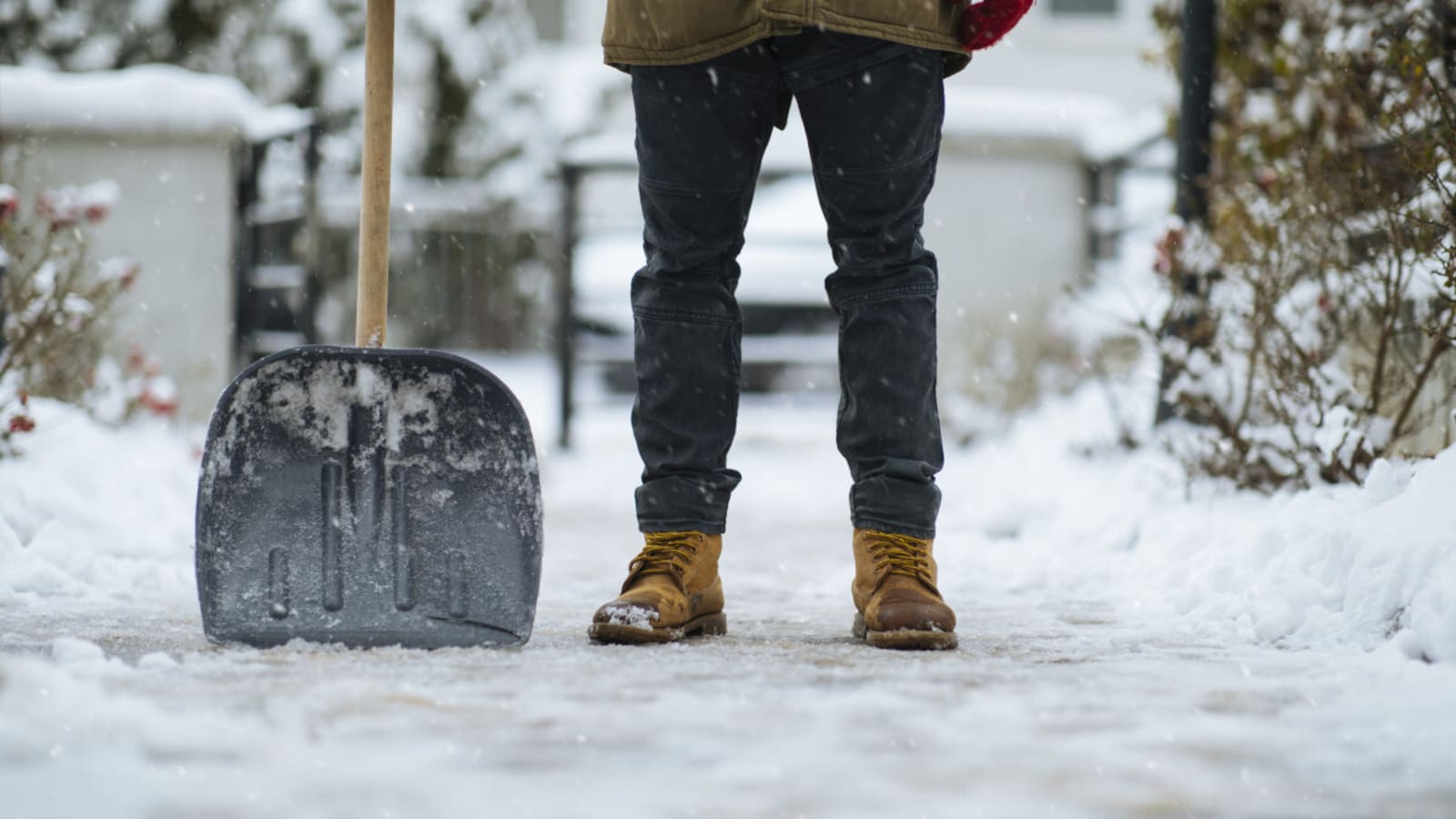
As winter season leans in with its icy grip, it's easy for homeowners reach for rock salt to de-ice their concrete surfaces; however, salt isn’t the best choice—it can cause concrete damage, harm nearby plants, and damage your car's undercarriage. If you're a first-time homeowner or simply ready to try safe alternatives, there are effective, salt-free ways to tackle ice. Whether you're looking to protect your investment (we know that decorative concrete patio wasn't cheap) or prioritize safety on an icy sidewalk, there are de-icing methods that will work for you.
First, Avoid Making These Mistakes
It’s important to be cautious when tackling ice removal to avoid doing damage to concrete or creating additional hazards. Here are a few mistakes to steer clear of:
- DON'T use metal shovels with sharp edges: These can scrape or chip your concrete, especially if it's mature concrete or already has minor cracks.
- DON'T pour hot water on ice: While it might seem like a quick fix, the water can refreeze rapidly, creating an even slicker and more dangerous slippery surface.
- DON'T over-apply ice-melting products: Even non-salt melt for concrete like calcium magnesium acetate or urea can cause damage to your entire driveway or surrounding plants if used excessively.
- DON'T use abrasive tools or aggressive chemicals: Tools with jagged edges and harsh chemicals designed for other purposes might be overly aggressive and cause potential damage to your concrete.
Use Physical Methods First
Removing ice physically is often the safest and simplest option. While it requires some effort, these tools and techniques can make the job much easier.
- Invest in a high-quality snow shovel with a metal edge to break through driveway ice buildup. Look for one with an ergonomic handle to reduce strain on your back.
- Try an ice scraper or chopper. These heavy-duty tools are perfect for loosening thick sheets of ice without damage to concrete caused by chemical deicers.
- Use a snow blower with an ice attachment. If you're dealing with light layers of ice or icy snow, this machine can save time and effort.
- Lay down traction materials like sand or cat litter. These won’t melt the ice but will provide instant traction and a safer walking surface on slick surfaces.
Apply Non-Corrosive Ice Melters
If physical removal isn’t enough, non-salt alternative solutions can effectively melt ice without causing long-term damage to your concrete or landscaping.
- Calcium Magnesium Acetate (CMA): A biodegradable effective solution that works well at lower temperatures. It’s gentle on concrete and not a threat to pets.
- Beet juice deicer products: These natural solutions aid the melting process by lowering the freezing point of ice and snow and are becoming popular as eco-friendly, safe options.
- Urea fertilizers: While primarily used in agriculture, they double as a gentle ice melter when applied sparingly. Be careful because overuse can harm plant life.
- Kitty litter and sand: While not technically melters, these provide traction on ice and can make surfaces safer without damaging concrete.
- Snow Melting Mats: Snow melting mats are electric heating devices laid on surfaces like driveways and walkways to prevent snow and ice accumulation by warming the ground and melting the snow.
Prevent Ice Formation
The best way to handle ice is a proactive approach and prevent it from forming in the first place. Simple measures can make a big difference when winter storms and freezing cold weather is in the forecast.
- Cover exposed surfaces with tarps or boards. This prevents snow accumulation from turning into ice on driveways and patios.
- Install heated driveway. Hydronic heating systems or electric cables embedded in the driveway can keep ice from forming, though they require some upfront investment.
- Apply a liquid deicing product before snowfalls. Products like magnesium chloride sprays can prevent ice bonding to concrete and make shoveling ice from driveways much easier.
FAQ
Can I make my own ice melt at home without salt?
Yes, and it's actually easier than you'd think. Create a DIY ice melt using ingredients like rubbing or isopropyl alcohol and dish soap. Mix one part rubbing alcohol with two parts water, and add a few drops of dish soap. Use a spray bottle to apply it to your icy driveway or sidewalk surfaces. This mixture works well for smaller areas and is a good choice for homeowners because it's safe for most concrete.
How do I know if I'm over applying ice melt?
You might be over-applying ice melt mixtures if you see excessive residue left behind after melting, if surfaces stay wet or sticky, or if there's damage to concrete, asphalt, or metal. Overuse can also harm plants and grass, leading to wilting or discoloration. Always apply sparingly and follow the recommended amount on the product label. For most areas, you only need a thin, even layer. You can always apply more if needed, but it's harder to undo damage from ice melt. Colored ice melt helps too... it makes it easier to see where you've applied.
What's the best way to spread ice melt?
If you're using ice melt, use a spreader for even distribution, especially for large areas like driveways and sidewalks, and apply a thin, consistent layer. For smaller spaces, sprinkle ice melt by hand, avoiding concentrated piles. Always follow the manufacturer’s guidelines for the correct amount per square foot and apply before or during a storm for better effectiveness.
Can I fix damage done from ice melt?
To fix damage from ice melt, clean surfaces thoroughly to remove remaining salt and prevent further issues. Repair cracks in concrete or asphalt with a repair kit, and for plant damage, flush soil with water to remove salt and replace dead plants. For metal or stone, clean with a vinegar-water solution and consider applying a sealant to protect surfaces from further corrosion or staining.
More must-reads:
- Chiefs sign star offensive lineman to $94 million deal
- Mavericks center Dereck Lively II reportedly undergoes foot surgery
- The 'No. 1 overall MLB Draft picks' quiz
Breaking News
Trending News
Customize Your Newsletter
 +
+
Get the latest news and rumors, customized to your favorite sports and teams. Emailed daily. Always free!








